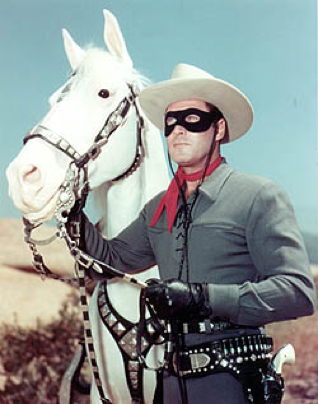Radio in the 1930’s

Every Sunday night in the 1930’s I would lay down in front of the family radio in the living room and ask my father to tune-in the adventures of The Lone Ranger. I can still hear the William Tell Overture and the announcer proclaiming, “The Lone Ranger, mystery rider of the plains, the unknown hero of the greatest legend of the west, his face was masked, no one could guess the inspiration for his life and self sacrifice, but everyone paid tribute to his strength and courage. With his faithful Indian companion, Tonto, the daring and resourceful masked rider of the plains led the fight for law and order in the early west. Return with us now to those thrilling days of yesteryear. A fiery horse with the speed of light, a cloud of dust and a hearty ‘Hi Yo Silver’ the Lone Ranger rides again.” Every young boy knew the fictional history of the Lone Ranger, whose real name was John Reid and who was born in 1850. He had been one of a posse of six Texas Rangers tracking a gang of outlaws. The Rangers were lured into an ambush and five were slaughtered. The sixth Ranger, young John Reid, was left for dead. But he managed to crawl to safety near a water hole, where he was found and nursed back to health by a friendly Indian named Tonto. Reid’s older brother, Daniel, had been one of the Rangers killed and to avenge his death John made a black mask from his brother’s vest. He buried his past at the graves of the five dead Rangers, donned the mask, and set out with Tonto, his Indian guide, to avenge wrongs throughout the Old West. Accepting no payment for his good deeds, the Long Ranger subsisted on the income from a silver mine that he and his brother had once discovered. Periodically he would return to the mine to stock up on silver bullets which he never used to killed anyone. Tonto is best remembered for his oft repeated phrase “Kemo Sabe,” which in his language meant “Faithful Friend.” The program would always end with someone asking the question “Who was that masked man?” And then you would hear the pounding of horse’s hoofs fading into the distance and a voice shouting “Hi Yo Silver, away!”
The Lone Ranger radio show had an unusual link with another popular 1930’s program I enjoyed as a child; The Green Hornet. Both programs were written by George W. Trendle, who claimed that John Reid (The Lone Ranger) was the great uncle of Britt Reid, the avenger of crime and known as the Green Hornet. Each episode of the Green Hornet started with a voice stating, “He hunts the biggest of game, public enemies who try to destroy our America.” Then after several measures of Rimsky-Korsakov’s The Flight of the Bumble Bee the voice would continue, “With his faithful valet, Kato, Britt Reid the daring young publisher matches wits with the underworld, risking his life that criminals and racketeers within the law may feel his weight by the sting of the Green Hornet. Ride with Britt Reid in another thrilling adventure as the Green Hornet strikes again.”
The premise of the Green Hornet was that of a modern-day Lone Ranger. The main character was the newspaper owner-publisher of the Daily Sentinel by day and the masked Green Hornet by night. Britt Reid's war against crime was an extension of his family history. However, he fought crime riding in his high-powered car, the Black Beauty, instead of on a white horse. Back in the 1930’s my playmates would have fun imitating the Green Hornet by saying, “Hurry Kato, this is where we break a tennis racket.”
